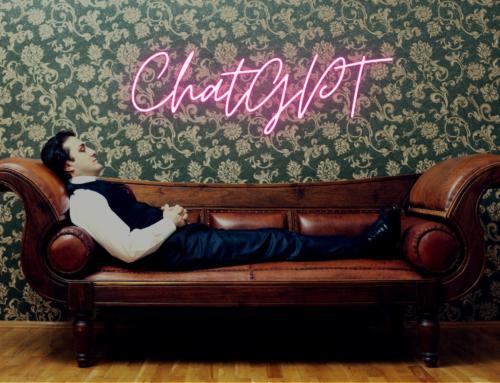Getting hit by a truck then getting up to walk to your hair appointment is resilient.
But, getting one of your arms cut off then growing a new one the next day is beyond resilient — it’s antifragile.
Sh*t happens in startups.
(Amen, right?)
I can relate.
I once signed a deal that nearly killed my company.
That experience helped me build the confidence to say no to deals like this in the future. It also led me to change the entire sales and delivery model we employed at the time. It pushed us to bring on implementation partners faster.
In other words, that potentially fatal event was just the shock we needed to adapt and improve.
After that experience, I’ve thought a lot about preparing a company for these types of random events.
What I did is what most CEOs do.
I focused on the elements I could build into the company and culture to help my team build resilience to sh*t happening.
However, very few of us focus on building beyond resilience. This is what Nassim Taleb calls, “antifragility.”
As he puts it, “Antifragility is beyond resilience or robustness. The resilient resists shocks and stays the same; the antifragile gets better.”
I have been giving a lot of thought to this recently.
What if you could design your company to be antifragile, taking in each challenge, and getting better?
What if you could always grow a new arm?

Hormesis: Understanding Antifragility
In 1888 Hugo Schultz, a German pharmacologist, found that certain poisons in large doses killed yeast, but in small doses, it actually stimulated growth. Another German, Rudolf Arndt, did a similar study around the same time, but he studied what happened when you administer small amounts of toxins to animals.
What these men found is that highly diluted poisons can enhance life processes, and dense concentrations may inhibit these processes and even end them. This became known as the Arndt-Schulz law: For every substance, small doses stimulate, moderate doses inhibit, large doses kill. (See hormesis curve.)
The law later fell out of favor due to the high number of exceptions to the rule. It was replaced with the concept of hormesis.
Hormesis is one form of mild antifragility.
Hormesis is any process in a cell or organism that exhibits a beneficial reaction to exposure to increasing amounts of a substance or condition. Within the so-called hormetic zone, there is a generally favorable biological response to low exposures to toxins and other stressors.
Hormesis comes from Greek hórmēsis “rapid motion, eagerness,” itself from ancient Greek hormáein “to set in motion, impel, urge on.”
Hormetics is the term proposed for the study and science of hormesis.
Examples of hormesis in everyday life include:
(1) physical exercise — the concept of exposing the body to stressors (weights, running, etc.) and the body responds by building more muscle tissue to adapt to this new environment
(2) alcohol — small servings of red wine are known to have positive effects on heart disease
(3) allergies — low doses of allergens are administered to help patients with severe seasonal allergies
(4) radiation — microdoses of radiation are used to cure some forms of cancer.
What can CEOs do to implement the equivalent of hormesis in their companies?
This summer, I have been keeping a notebook with ideas. I’ve also reached out to fellow CEOs and other successful folks to ask them to ideate with me.
This article is the first of a series where I share a collection of these ideas.
(I am also trying something new here. I plan to make this a living article that we update periodically with new ideas.)
You can also join the conversation with countless CEOs and share your ideas here.
1 — Be an Introspective CEO — Learn From Your Mistakes
The first step in building an antifragile company is to start at the top.
The best CEOs embrace the pain that comes with the events that cause shocks to the system. They don’t approach it like a superhero but like a humble padawan looking to learn from the teachings of Yoda. For them to do this, they have to master the art of introspection.
CEOs who are ready to look at themselves during a storm and find the opportunity for growth benefit from hormesis. This isn’t easy and takes practice.
It requires finding time for solitude.
It also requires a disciplined regimen for learning. This will help you build the muscle memory to handle the next shock.
2 — Build a Team that Loves Rapid, Continuous Criticism
Most companies develop an annual performance review system that takes place once a year. It’s a system that dates to the 1950s and has become incredibly ineffective.
The reason is that most people don’t get the level of criticism they really need or deserve.
Companies like Ray Dalio’s Bridgewater Associates takes a different approach.
They deliver continuous ranking and rating of everyone in an open format.
This is key to their antifragility. I believe every person on a team should know exactly where they rank. They should know the mistakes they’ve made, what can boost their performance, and frankly where they suck.
While this may sound a bit harsh or unorthodox, consider this: everyone on the team already knows who is strong and who is weak.
That knowledge is the unspoken secret that most managers miss. They hope they can counsel team members 1:1 to coach them to perfection.
But, there is something powerful about involving the entire team in discussing those issues with each other in the open.
It deepens relationships, builds trust, and creates a collaborative growth environment helping everyone to get stronger.
I’ve used it in my new role, and it works well.
Why does this create antifragility?
Because when sh*t happens, it’s really a signal to the whole team saying, “you need to improve.” And, when people are used to it — the small dose of poison that comes with critical feedback — they get better as a group.
(Listen to this podcast by Adam Grant on how to get better at taking and dishing criticism.)
3 — Know Who is in Your Tribe — Understand Your Team’s Wiring and Grow Empathy
One of the most powerful muscles to build on a team is trust.
As Patrick Lencioni, author of The Advantage, puts it, “the single greatest advantage any company can achieve is organizational health. Yet it is ignored by most leaders even though it is simple, free, and available to anyone who wants it.”
But, how can you build trust in a way that improves with time and especially when the organization is under stress?
The answer lies in behavioral assessments.
What if every team member has a complete picture of the wiring of everyone else on the team? What if periodically the team gets together and shares this picture and discusses how it affects their interactions with other members?
What results is a team that is tighter, more cohesive and, more importantly, rich with empathy for one another.
Disasters in a company usually fall on one or more teams.
Often, when it happens, most teams unravel because they lack a foundation of trust. By building the empathy muscle, they can better handle events like lost sales — quickly regrouping on new sales strategies. They can handle angry customers — getting closer to them to learn to improve. And of course savvy competitors — respecting them and seeing them as worthy adversaries.
I have tried this approach, and it works.
Here is a copy of my behavioral assessment.
Summary
Companies are complex systems. They are their own organisms.
They are not inanimate but biological. With that view in mind, biology has coded in the ability to be antifragile. So, companies (like humans) are harmed by the absence of stressors.
Applying load and introducing stress is a way to unlock incredible potential for continuous improvement. You can accomplish this by using one idea at a time for going beyond resilience.
Start today.
Stay tuned for part II, where I will share more ideas like mental models, hiring, premortems, and more!
If you’d like to join the conversation and share ideas, click here.



